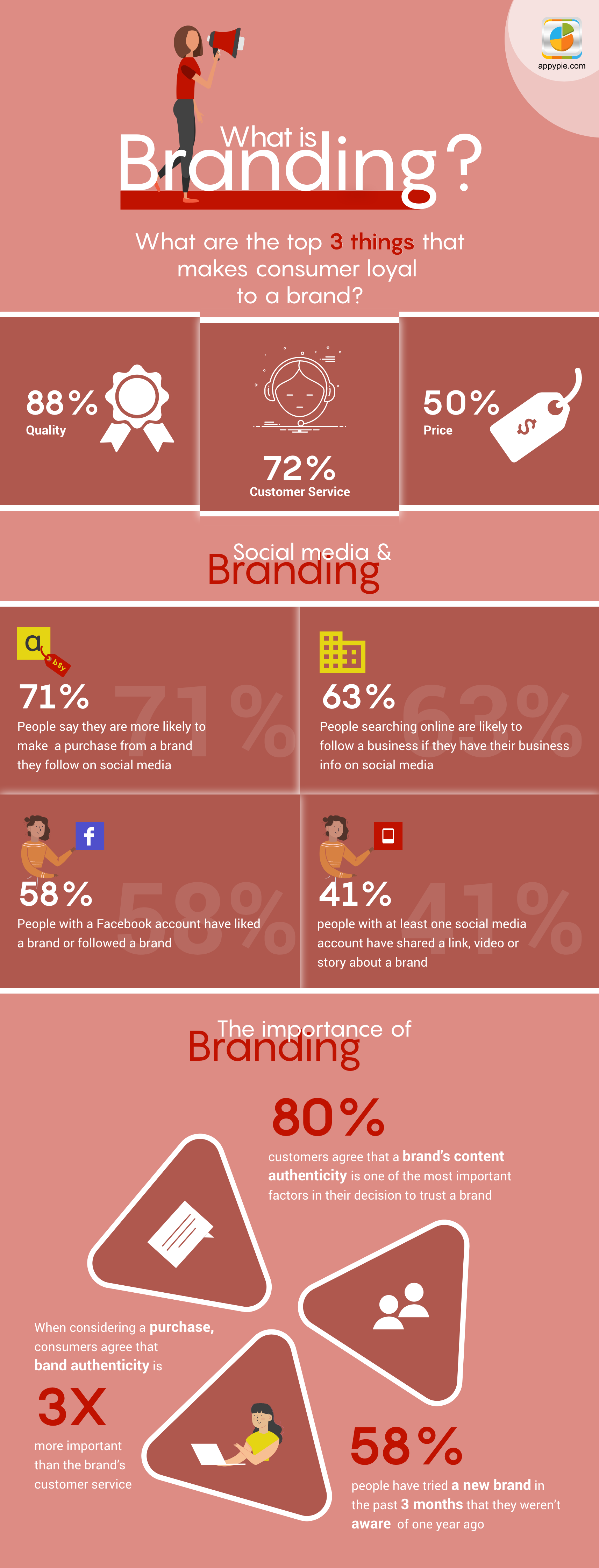What is Branding & How to Create a Strong Brand Strategy?

By Abhinav Girdhar | Last Updated on April 10th, 2024 8:07 am | 5-min read
If you are new to the marketing world then you must be constantly bogged by questions like
- What is branding?
- What is brand equity?
- What is a brand strategy?

Definition of a Product
The loose definition of a product would be – something that can be offered in the market as a solution to a problem or to satisfy a need. This may include physical goods, services, persons, experiences, places, events, organizations, ideas, properties, and information, among other things. The same product may be offered by multiple companies. Let’s take the example of toothpaste. The product has essentially one primary function – to clean teeth and gums. Irrespective of how many features or fancy elements you add to it, the primary function stays the same. How is it that people identify with the same product (toothpaste) of a particular company and choose it over the others in the market? It’s simple! It is the brand that they identify with. Let’s discuss the definition of brand to get further in the discussion.Definition of Brand
According to American Marketing Association, “A brand is a name, term, design, symbol, or any other feature that identifies one seller’s good or service as distinct from those of other sellers.” The meaning of a brand is the perception customers have about certain products, services, and activities of a company, both in a practical and emotional way. A toothpaste may make your teeth whiter (physical) while making you feel confident in your smile (emotional). Hence, the brand is a sum of physical and emotional associations that customers form with the company or the product. It is easy to recreate the product, but to recreate a brand is not an easy job!Definition of Branding
Branding is a combination of marketing practices that are applied actively to shape or create a brand. However, this definition barely scratches the surface. Let’s dig deeper and answer the real question – what is branding? Branding, when done right, will let you wade through the noise of multiple products in the market and capture the attention of your target audience. Good branding has the potential to convert first-time buyers into loyal customers. There are multiple topics pertaining to Branding that need to be understood before getting into the nuances. Let’s take them up one by one.What is brand equity?
A typical marketing term – brand equity tells you about the value of a brand. This value is based on consumer perception of the brand and the experiences they have with it. If the customers’ perception of the brand is positive, the brand equity is positive as well. However, if the brand has been under-delivering or has driven people to recommend others to avoid it, the brand has negative brand equity.What is brand strategy?
A brand strategy consists of a long-term plan to develop a successful brand and eventually achieve certain goals. If you have a strong brand strategy that is implemented right, it positively affects all the aspects of a business, while connecting directly to the needs and emotions of the consumers in the competitive environment.How to create a strong brand strategy?
Now that you have answered the primary questions like – what is branding, what is brand equity, and what is brand strategy, it is time to understand how to create a strong brand strategy for your brand or company. Listed below are the steps to create a strong brand identity:- Analyze the existing core identity
- Conduct a thorough market research
- Develop a customer persona
- Understand & accept the brand perception
- (Re)define core identity
- Define your brand positioning
- Define the value proposition
- Draft the right tagline
- Develop a messaging architecture
- Create brand guidelines
- Develop a content strategy
The essence of your brand, its core identity is defined in the vision, mission, and values of your company. If you have put it all in place already, this is the time to scrutinize it. You must also analyze the content or brand messaging that has already gone out. Figure out whether this content conveys your identity properly and what you should retain or discard on your path ahead.
Groundwork is of critical importance for any aspect of marketing. Through diligent market research, you must find out where you stand in the marketplace particularly in context of your closest competitors. This helps you create the right niche for your brand and stand apart.
A customer persona is the demographic and psychographic mapping of prospective or target customers. This includes details about who they are, what are their typical behaviors, the things they care about, and the problems they want solutions for. This is critical because if you don’t know who you are talking to, you probably won’t have the best communication.
If you want your brand to succeed, be honest about the perception people have about your brand. Conduct an internal and external perception audit and compare the two. This will give you the similarities and discrepancies. Once you have these insights, you would be better equipped to define and bridge the gap between where you are and where you want to be.
Based on the initial scrutiny of the core identity, you must decide as a company or brand about what you want to convey through your brand’s vision, mission, and values. This core identity guides the entire team about the purpose and the goal that they are working towards. If you do not have this clarity, you cannot build a strong brand. 
Your brand positioning is what sets you apart in the marketplace and differentiates you from your competitors. Your employees must have this clarity so that they can take decisions that are aligned with the position.
Your value proposition is a crisp listing of all the benefits (functional and emotional) that are provided by your brand to the customers. It is a combination of who you are, what is unique about you, how you solve problems and why should you be chosen over others. Your value proposition is the promise you make about what you will deliver to them when they buy from you.
The tagline you create for your brand is an extension of your brand position. It can also be considered as an interpretation of your value proposition. This means that your tagline would resonate with both, your brand position and the value proposition.
It is important to have uniformity in context of content and communication, both internally and externally. Developing a messaging architecture helps you do this. It is a combination of positioning, value proposition, tagline, and brand stories. This means, by the time you reach this step, you have created the foundation of your messaging architecture.
This is a detailed document that is a synthesis of all that you have done till now in the process. The document essentially functions as a playbook to guide all your internal and external resources on how they must use the brand.
Content strategy may not strictly be a part of the brand strategy, but the two have enough to contribute to each other. Brand strategy formulates the marketing goals, which in turn formulate the content strategy. The content that you put out there as a part of your marketing efforts should have the ability to pull people in and not just be about selling the products you make. Conclusion
Branding is instrumental in setting you and your offerings apart from the competitors in the market. It is not a one-time activity. In fact, you need to keep working at your branding efforts to ensure a consistent perception among your customers and prospects alike. For branding, you need to have a strong brand strategy in place. This process of creating a brand strategy is intense and needs the involvement of multiple stakeholders in a company in addition to the marketing department. Do you have your brand identity in place? Find out how you can create your own brand logo in just three steps using Appy Pie’s easy to use Logo Maker!Related Articles
- Mastodon vs. Twitter: What Should You Choose?
- What is Image Inpainting? A Comprehensive Guide to Reviving Your Photos
- 22 Non Profit Logo Examples for Inspiration
- Importance of Workflow Automation for Businesses in 2023
- The Ultimate Guide to Mobile Website With Top 25 Mobile Website Design Examples
- How To Find and Remove Duplicates in Google Sheets
- How Much Does a Website Cost To Build in 2024? A Comprehensive Guide
- NFTs, The Cryptocurrency of 2022
- The Versatility of Cognac Color in Different Design Styles and Genre
- The Top 7 Newsletter Platforms in 2023: Elevate Your Email Marketing
